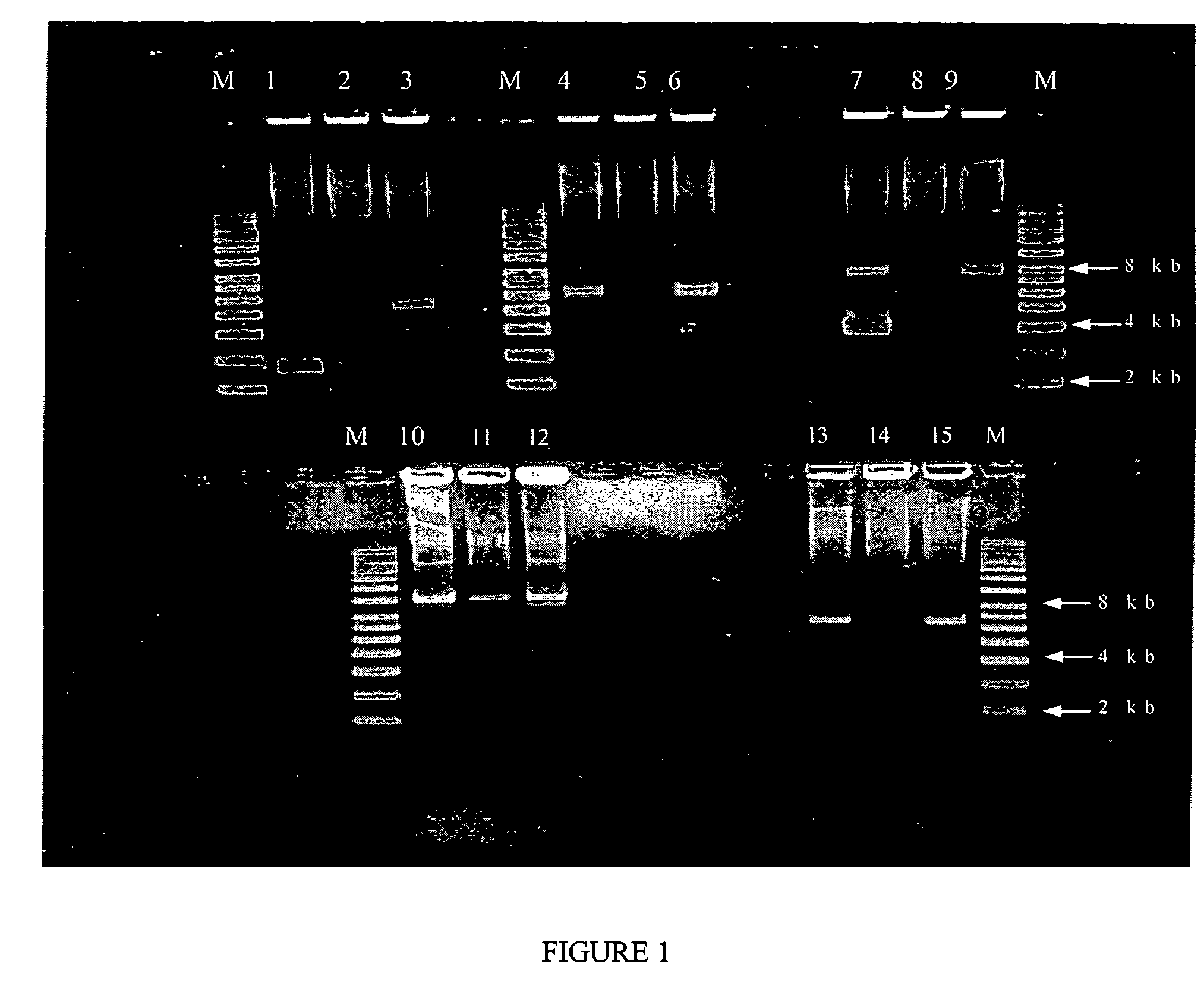Compositions and methods for controlling copy number for a broad range of plasmids and uses thereof
- Summary
- Abstract
- Description
- Claims
- Application Information
AI Technical Summary
Benefits of technology
Problems solved by technology
Method used
Image
Examples
example i
Construction of Bacterial Strains
[0067]New E. coli host strains comprising at least one poly(A) polymerase gene operably joined to a conditionally inducible promoter were constructed using E. coli strain TransforMax™ EC100™-T1R (F-mcrA Δ[mrr-hsdRMS-mcrBC] 80dlacZΔM15 ΔlacX74 recA1 endA1 araD139 Δ(ara, leu)7697 galU galK λ-rpsL nupG), which is commercially available from EPICENTRE.
[0068]E. coli strain TransforMax™ EC100™-T1R, which contains a wild-type pcnB gene, was mutated by a targeted knockout of said gene which ceases its wild type function by a homologous recombination technique facilitated by the use of plasmid pKD46 which contains an IPTG inducible promoter operably linked to genes encoding phage A red, exo and bet proteins; said plasmid is available from the E. coli Genetic Stock Center (CGSC) at Yale University, CGSC No. 7739. The DHFR gene from the EZ::TN™ Transposon (available from EPICENTRE) was amplified by PCR using the FailSafe™ PCR System to have 45 bases homologous ...
PUM
 Login to View More
Login to View More Abstract
Description
Claims
Application Information
 Login to View More
Login to View More - R&D
- Intellectual Property
- Life Sciences
- Materials
- Tech Scout
- Unparalleled Data Quality
- Higher Quality Content
- 60% Fewer Hallucinations
Browse by: Latest US Patents, China's latest patents, Technical Efficacy Thesaurus, Application Domain, Technology Topic, Popular Technical Reports.
© 2025 PatSnap. All rights reserved.Legal|Privacy policy|Modern Slavery Act Transparency Statement|Sitemap|About US| Contact US: help@patsnap.com

